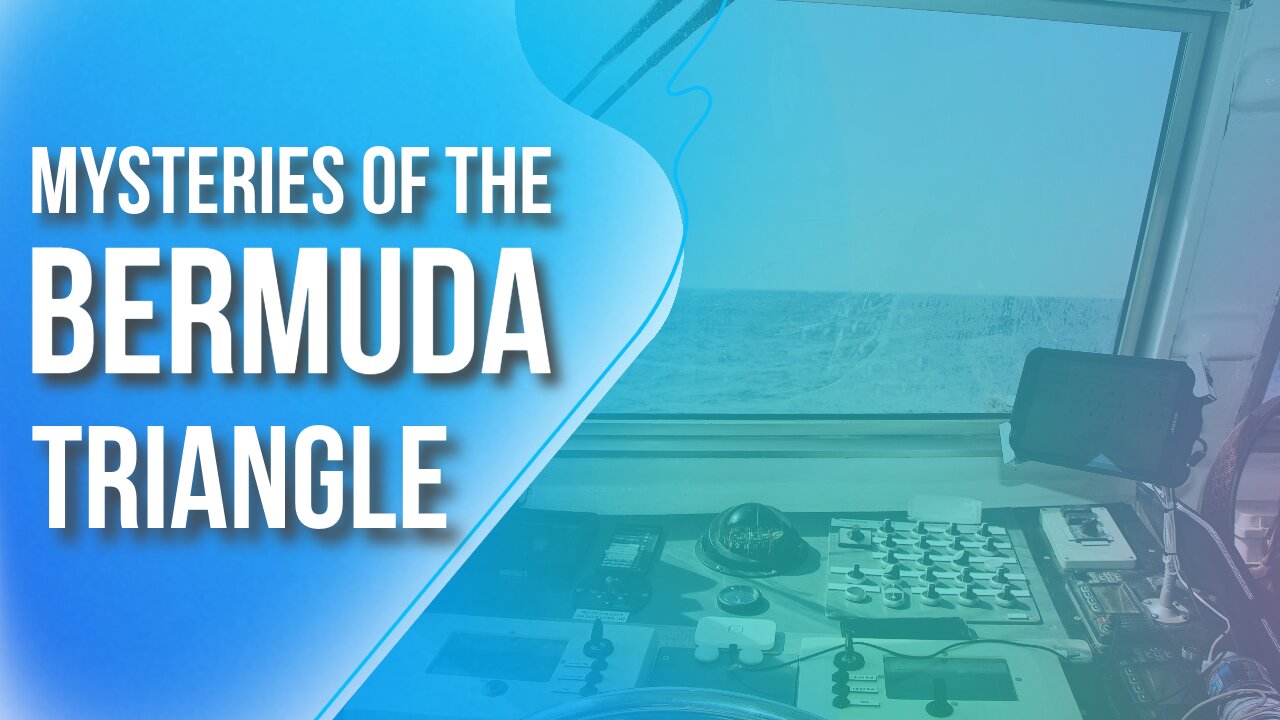Premium Only Content

The Bermuda Triangle: Unraveling the Mystery
The Bermuda Triangle, also known as the "Devil's Triangle," is an area in the Atlantic Ocean that has fascinated people for years due to stories of mysterious disappearances and strange occurrences. It's roughly defined by Miami, Bermuda, and Puerto Rico. While some say it's all sensationalism and coincidence, the mystery endures.
The legend of the Bermuda Triangle took shape in the early 20th century but gained wide attention in the mid-20th century. Vincent Gaddis coined the term "Bermuda Triangle" in a 1964 magazine article, and Charles Berlitz popularized it in his 1974 book, "The Bermuda Triangle," describing a place where ships and planes vanished mysteriously.
The 1970s saw the peak of the Bermuda Triangle's popularity in popular culture. Documentaries, books, and movies fueled the mystery, often emphasizing supernatural aspects like ghost ships, time warps, and extraterrestrial encounters.
One famous incident is the 1945 disappearance of Flight 19, five U.S. Navy bombers that vanished during a training mission from Fort Lauderdale, Florida. The search and rescue mission also lost a plane, fueling the Bermuda Triangle legend.
In 1963, the SS Marine Sulphur Queen disappeared with its 39 crew members while in the Bermuda Triangle. No wreckage was ever found. Similarly, in 1976, the tanker SS Sylvia L. Ossa vanished with 37 crew members on board while traveling from Tampa, Florida, to Boston, Massachusetts.
Various theories attempt to explain the Bermuda Triangle's mysteries, including extraterrestrial involvement, the influence of Atlantis, vortices transporting objects to other dimensions. However, there's no scientific evidence to support these theories.
Despite its reputation as a paranormal vortex, others have offered more rational explanations including -
Human Error: Navigational mistakes, miscommunication, and poor decisions by pilots and sailors contribute to accidents.
Weather: Sudden and severe weather changes, like waterspouts and hurricanes, pose risks.
Methane Hydrate: Some suggest that methane hydrate, a natural gas, might be on the ocean floor, causing vessels to lose buoyancy if released.
Compass Variations: Magnetic anomalies in the area can make compasses behave erratically.
Traffic Volume: The Bermuda Triangle is heavily trafficked, and more traffic means more accidents statistically.
Skeptics argue that selective reporting, sensationalism, and disregard for statistical norms fuel the Bermuda Triangle mystery. Most ships and planes pass through without incident. Modern technology, like GPS and satellite tracking, has reduced unexplained disappearances, which often occurred when such tech was in its infancy.
Investigations into famous Bermuda Triangle incidents have yielded plausible explanations. For example, the wreckage of Flight 19 was discovered in 1991 off the coast of Florida, although the exact cause of the crash remains unclear.
The Bermuda Triangle remains a captivating mystery. Whether it's the thrill of the unknown, fascination with historical enigmas, or the enduring allure of adventure, this region continues to spark curiosity about the unexplained.
Photo credits - NASA, Luke Hancock, Athanasius Kircher, Alphaios, USGS, U.S. Navy @ wiki commons
Nino Souza, Sean Johnston, Alex Andrews, Brooke Vandy, Korie Jenkins, Earl Andre Roca, Deklanşör 67, Isidoro Esposito, Johannes Plenio, Pixabay, Kamran Norollahi, Kelly, Maël BALLAND, Ruvim Miksanskiy @ pexels.com
Music theme - Trumpets in Your Ears by Wowa & Chris Rede @unminus.com
-
 1:01:28
1:01:28
Wendy Bell Radio
3 hours agoWeekends With Wendy
2.64K9 -
 20:18
20:18
Stephen Gardner
15 hours ago🔥Trump's SECRET Epstein Briefing EXPLAINED! Alex Jones & Roger Stone EXPOSE IT ALL!!
13K54 -
 16:24
16:24
Forrest Galante
10 hours ago6 Deadliest Man Eaters to Ever Exist
49.4K16 -
 2:22:46
2:22:46
The Connect: With Johnny Mitchell
17 hours ago $8.95 earnedOne Man's Mission To Stop Human Trafficking: How A Billionaire Mercenary Saved Hundreds Of Children
33.8K27 -
 8:21:32
8:21:32
TheGodfatherGus
8 hours ago🔴MINECRAFT - The World's First Oricon Build! | #rumbletakeover
1.93K1 -
 LIVE
LIVE
KingB33Gaming
1 hour agoVengeance | Yakuza 0 Director's Cut (Chap 15)
166 watching -
 12:14
12:14
Nikko Ortiz
1 day agoMilitary Fails Of The Week
13.2K12 -
 1:16:31
1:16:31
Omar Elattar
9 months agoThe Untold Story: How Vans Became a $3 Billion Dollar Shoe Empire In 75 mins
19.9K9 -
 LIVE
LIVE
LethalPnda
2 hours agoLocked & Loaded! 🔥 Fate Trigger Beta #RazerCreator #SpacePanda @Mystivis
103 watching -
 LIVE
LIVE
BigDaddySlick78's Live Gaming Channel
3 hours ago💰I Pay You To Play Call of Duty Warzone Rebirth Island LIVE #callofduty #warzone #cod #gaming
47 watching